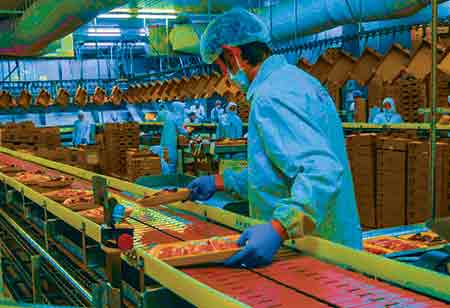THANK YOU FOR SUBSCRIBING
Be first to read the latest tech news, Industry Leader's Insights, and CIO interviews of medium and large enterprises exclusively from Food and Beverage Tech Review
How Does Bioenergy Work On Organic Matter?
Bioenergy is a renewable energy source that harnesses the power of organic matter and is a promising and sustainable alternative to conventional fossil fuels.

By
Food and Beverages Tech Review | Tuesday, December 05, 2023
Stay ahead of the industry with exclusive feature stories on the top companies, expert insights and the latest news delivered straight to your inbox. Subscribe today.
Bioenergy reduces greenhouse gas emissions and climate change. It is becoming more popular since it is carbon-neutral and plays a vital role in waste management, reducing landfill burdens and methane emissions.
Fremont, CA: Bioenergy is a renewable energy source that harnesses the power of organic matter and is a promising and sustainable alternative to conventional fossil fuels. As a renewable energy source, bioenergy benefits the environment and the economy, creating jobs, boosting energy independence, and developing rural communities.
Understanding Bioenergy
The primary feedstock for bioenergy production is biomass, which can be categorized into first-, second-, and third-generation biomass.
● First-generation biomass consists of crop stubble, sugarcane bagasse, wood chips and sawdust, which are all sustainable.
● Second-generation biomass, also called lignocellulosic biomass, is composed of woody plants, grasses, and agricultural waste, and it takes advanced technologies to break it down.
● Third-generation biomass is algae and microalgae, which are promising methods for sustainable biofuel production as they can convert sunlight into fuel quickly.
The Bioenergy Production Chain
The process of transitioning from raw organic matter to a usable energy source involves multiple stages necessitating specialized technologies and techniques.
Feedstock Production: Biomass feedstock’s like sugarcane and corn are grown depending on climate, soil, and bioenergy usage.
Harvesting and Transportation: Harvesting and transportation efficiency are critical to a sustainable bioenergy supply chain since they determine the input and output of energy.
Conversion: Bioenergy mostly comes from combustion, anaerobic digestion, and thermochemical conversions like pyrolysis and gasification, all with their unique advantages.
Distribution and Utilization: Bioenergy uses existing infrastructure for electricity generation, heating, and auto fuel, making it a valuable resource.
Bioenergy Conversion Technology
In bioenergy conversion, biomass is turned into energy carriers by using thermochemical and biochemical methods like combustion, gasification, and pyrolysis. With these methods, you get heat and electricity, biomass gets converted into syngas for liquid fuels and power generation, and you get solid biochar and liquid bio-oil.
Benefits of Bioenergy
Environmental Benefits
Bioenergy reduces greenhouse gas emissions and climate change. It is becoming more popular since it is carbon-neutral and plays a vital role in waste management, reducing landfill burdens and methane emissions.
Challenges and Opportunities
There are a lot of challenges to bioenergy, including land competition, biodiversity impacts, and finding sustainable feedstock. With second and third-generation biofuels promising solutions, the research aims to improve efficiency, explore advanced feedstock options, and promote sustainable land-use practices.
I agree We use cookies on this website to enhance your user experience. By clicking any link on this page you are giving your consent for us to set cookies. More info


However, if you would like to share the information in this article, you may use the link below:
https://www.fbtechrevieweurope.com/news/how-does-bioenergy-work-on-organic-matter-nwid-1719.html





